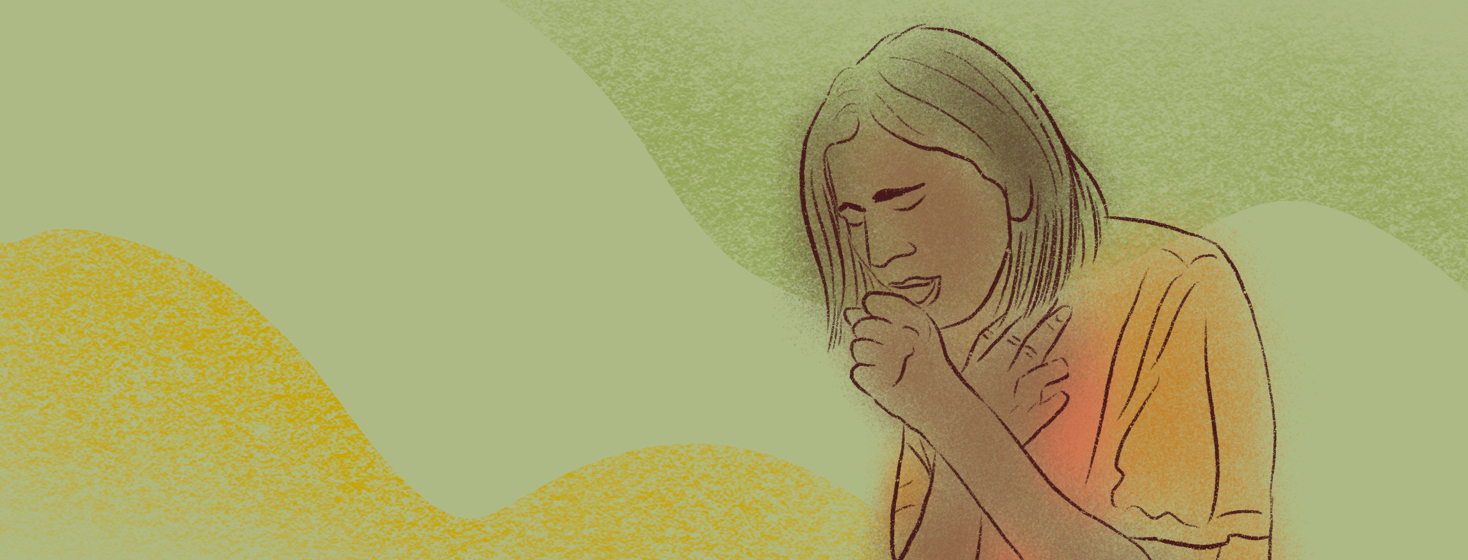Diaphragmatic Endometriosis
When tissue called endometrium grows outside of your uterus, it causes endometriosis, a painful pelvic condition. Most of the time, endometriosis affects the ovaries, fallopian tubes, and tissue lining the pelvis. But sometimes it can spread even further to other areas of your body.1,2
In rare cases, endometrium extends into the muscle that helps you breathe – the diaphragm. When that happens, the condition is called diaphragmatic endometriosis. This condition affects around 1 out of 100 people diagnosed with endometriosis.1,2
What causes endometriosis of the diaphragm?
Researchers and healthcare experts do not clearly understand what causes endometriosis of the diaphragm. Here are some possible causes:1
Menstrual blood moving in the wrong direction.
During your period, menstrual blood usually flows out of the body.
But sometimes, blood and endometrial cells can move backward into the fallopian tubes and pelvic cavity. This is called retrograde menstruation.
Endometrial cells then attach to the walls of your pelvis and pelvic organs and can even reach your diaphragm. These cells expand, grow thicker, and bleed during your menstrual cycle, triggering endometriosis symptoms.
Cells are transported to another part of the body.
Your blood vessels or lymphatic system may transfer endometrial cells from the uterus to other areas of the body.
Cell changes.
Estrogen and other hormones could transform cells into endometrial-like cells.
Problems with your immune system.
If your immune system is weakened, it may miss endometrial-like tissue and fail to destroy it.
What are the symptoms of endometriosis of the diaphragm?
Endometriosis of the diaphragm often does not trigger any symptoms. Researchers estimate that 7 out of 10 people with the condition do not have any signs of illness. If you do have symptoms, they could include:2,3
- Chest pain
- Pain in the upper right part of the abdomen
- Pain under the ribs
- Shoulder pain
- Sharp chest pain that gets worse when you breathe
- A buildup of blood between your chest wall and lungs
- Collapsed lung
- Coughing or spitting up blood
- Nausea
- Vomiting
Endometriosis pain usually happens around your monthly period but can affect you at any time. Symptoms may be mild or severe, depending on where and how deep your endometriosis lesions are. Lesions are a sign of endometriosis of the diaphragm.2
How do doctors diagnose endometriosis of the diaphragm?
It can be hard to get a proper diagnosis of endometriosis of the diaphragm. The condition is rare, and most people do not have symptoms.
Some doctors may overlook it or even mistake it for another illness. People with this form of endometriosis often receive a diagnosis later in life than people with pelvic endometriosis.4
Your doctor may use imaging tests such as a CT (computed tomography) scan or MRI (magnetic resonance imaging) to look for lesions. Lesions usually appear:2
- In front of the diaphragm
- Behind the diaphragm
- Behind the liver
Between 50 and 90 percent of people with severe pelvic endometriosis also have diaphragmatic endometriosis. Some researchers say if you have pelvic endometriosis, your doctor should examine your diaphragm, too.3,4
What are the treatments for endometriosis of the diaphragm?
Medicine and surgery are the typical treatments for endometriosis. You and your doctor will decide the best treatment based on your symptoms:1,5
Hormone therapy:
This treatment helps control or block the hormones that cause a buildup of endometrial tissue. The goal is to lower endometriosis pain or get rid of it altogether. But keep in mind that hormone therapy may be a temporary solution. If you stop treatment, your symptoms may come back.
Surgery:
If endometriosis pain continues with medicine, your doctor may suggest surgery. With surgery, it is less likely that your symptoms will return. The surgeon will remove lesions using minimally invasive surgery, which:
- Does not require as many incisions (cuts)
- Is safer than open surgery
- Will give you fewer problems during and after surgery

Join the conversation